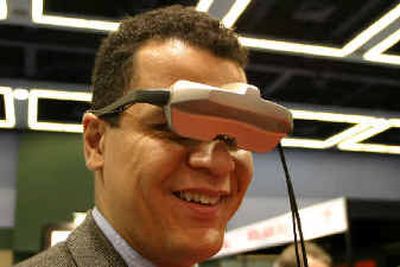High-tech gadgets still carry some hefty price tags

SEATTLE — A television sewn into your shirt sleeve. A dashboard screen to monitor the kids in the back seat. A 3-D computer monitor sharp enough to make a hardcore gamer’s heart stop — or help a surgeon start one.
The gizmo-packed exhibition hall at the Society for Information Display’s international symposium offers a tantalizing vision of what’s to come.
This week’s meeting was all about extremes — monitors that are very big or very small, very thin, very light and very, very high-resolution.
Another big focus: making the cutting-edge technology very low cost.
While some tech enthusiasts are willing to shell out thousands of dollars for the next new thing, whether and how soon more mainstream versions of these gadgets will appear in your living rooms — or even clothing — will depend largely on the price.
Few can afford to pay about $12,000 for a stunningly detailed 3-D computer monitor from SeeReal Technologies GmbH. The screen has two built-in cameras that track eye movement, so the viewer can move about and still see the 3-D display in focus.
For now, the product is aimed at government officials who pore over detailed maps or doctors who perform delicate surgery. But its tiny German maker recently introduced a lower-end version — sans the eye-tracking system — for about $3,600.
In perhaps a year, SeeReal hopes it can offer a consumer version — ideal for video game enthusiasts — for about $500.
While many companies were promoting super-slim screens for use in cell phones and other handheld devices, researchers from Royal Philips Electronics were showing off technology that would make screens as thin and flexible as plastic.
The ultra-lightweight displays, still in development, also promise to be rugged but easier to cut to size, potentially making them much easier for manufacturers to work with, said Henri Jagt, a researcher with Philips in the Netherlands.
The screens could be used for “wearable displays” sewn onto jeans or a sweater, or to create a low-cost curved computer monitor.
Eastman Kodak Co. touted its thin, high-resolution screens made with “organic light-emitting diodes” as being better than liquid-crystal displays because they don’t need a backlight.
The technology, already found in digital cameras, cell phones and car stereos, could be incorporated into a dashboard monitor to police the kids or a rearview mirror display to offer directions to the hotel, the Rochester, N.Y.-based company said.